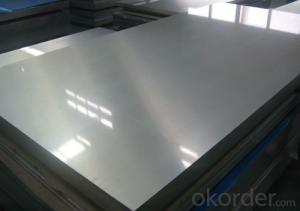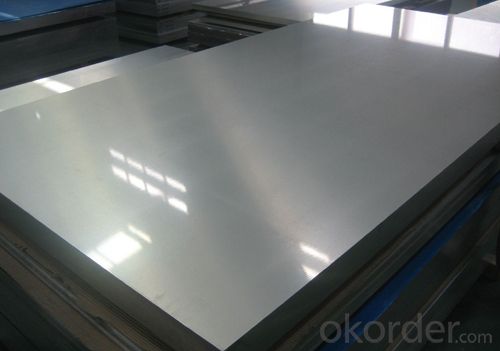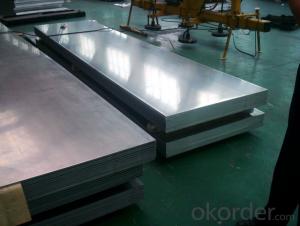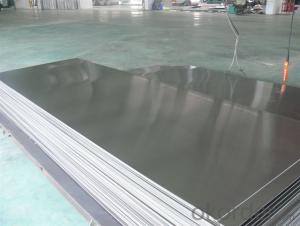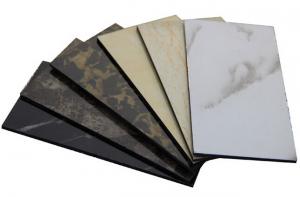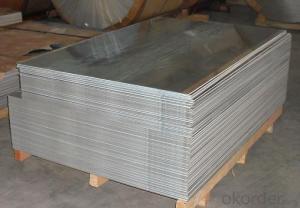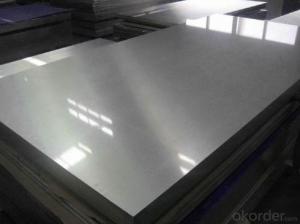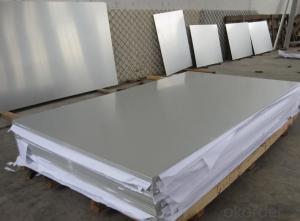Brushed Aluminum Sheets Laminate for Finished Aluminium Panels Wall Decoration
- Loading Port:
- Shanghai
- Payment Terms:
- TT OR LC
- Min Order Qty:
- 5 m.t.
- Supply Capability:
- 60000 m.t./month
OKorder Service Pledge
OKorder Financial Service
You Might Also Like
Specification
Description
| Finished Aluminium Panels Used For Wall Decoration | |||||
Alloy No. | Thickness (mm) | Width (mm) | Length (mm) | Temper | |
A1050,A1060, A1070, A1100 | 0.2-100 | 20-2200 | 20-8000 | O,H12,H22,H14,H16,H18, H24,H26,etc | |
3A21, A3003, A3105, A3004 | 0.2-100 | 20-2200 | 20-8000 | O,H14,H18,H24,etc | |
A5052, A5005, A5083, A5754 | 0.2-100 | 20-2200 | 20-8000 | O,H18,H24,H32,H34,H111,H112 ,etc | |
A6061, A6082, A6063 | 0.2-200 | 20-2200 | 20-8000 | T4,T6, T651,etc | |
A8011 | 0.2-100 | 20-2200 | 20-8000 | O,H12,H22,H14,H16,H18,H24,H26, etc | |
Packing: Export wooden pallets. The bundle weight not exceed 2MT. Loading: by 1x20GP, 1X20GP can load about 25MT. | |||||
Standards: ASTM-B209. EN573-1, GB/T3880.1-2006 | |||||
Quality of material: totally free from defects like white rust, oil patches, roll marks, edge damage, camber, dents, holes, break lines, scratches and free from coil set. | |||||
Application : Mainly used insigns, billboards, building exterior decoration, bus body, high-rise buildings and factories wall decoration, kitchen sink, lamp, fan leaves, with pieces of electronic, chemical equipment, sheet metal processing parts, deep drawing or spinning hollowware, welding parts, heat exchangers, bell surface and disk, plate, kitchenware, decorations, reflective devices, ect | |||||
MOQ | 5 tons | ||||
Payment term | T/T,L/C | ||||
Delivery Time | 15-60 days after 30% T/T payment or receiving L/C copy | ||||
Kind attention: Specifications can be customized as the customer’s requirements. | |||||
PVDF and PE coated aluminium coils/sheets:
PVDF color pre coated aluminum coils/ sheets:
It is well known that fluorocarbon lacquer coating (PVDF coating) owes the best acid resistant/alkali and temperature tolerant capabilities of all painting materials. Being the best quality of precoated aluminum, PVDF coated coils are especially suitable for outdoor roofing walls and ceiling manufacturing.
Polyester (PE) color pre coated aluminum coils/ sheets :
Using high-grade polyester lacquer coating material, the finished coated coils are with delicate color uniform texture, color and diverse. It is the most popular and most common used materials in decorative usage. The PE coated aluminum are widely used in ACP( aluminum composite panel ) production and indoor ceiling usage.

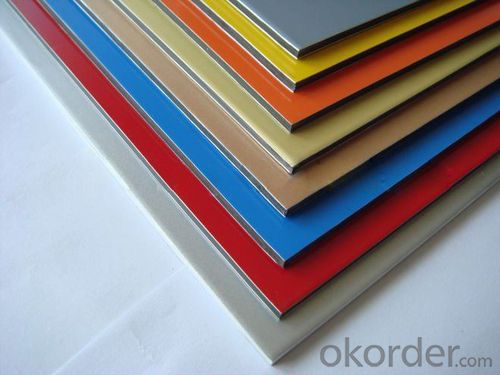
Production facilities and processing range
Equipments | Quantity | Thickness range | Width range | Length range | Max loading weight |
Continuous casting rolling mill | 23 | 6.0-10.0mm | 1000-2000mm | ------------- | 15000kgs |
Cold rolling mill | 2 | 0.1-6.0mm | 900-1700mm | ------------- | 12000kgs |
High accuracy cold rolling line | 1 | 0.1-1.0mm | 650-1420mm | ------------- | OD 2000mm |
Annealer | 14x40T | ------------- | -------------- | ------------- | ------------- |
Coating line | 3 | 0.15-1.5mm | 600-1600mm | ------------- | 5000kgs |
Embossing line | 1 | 0.2-1.2mm | 350-1300mm | ------------- | 8500kgs |
Straightening line | 1 | 0.1-2.0mm | 600-1700mm | ------------- | 10000kgs |
Slitting line | 1 | 0.2-3.0mm | 21-1595mm | ------------- | 10000kgs |
Wave shearing line | 1 | 0.13-0.5mm | 550-1230mm | ------------- | 10000kgs |
Shearing line | 3 | 0.125-4.0mm | Max 1700mm | ------------- | 10000kgs |
FAQ
Q: Can you provide free samples?
A: Yes, free samples will be sent to you on freight at destination.
Q: Can I get your latest catalogue?
A: Yes, it will be sent to you in no time.
Q: What are your payment terms?
A: We accept L/C, D/A, D/P, T/T, West Union, etc
Q: Can you provide free samples?
A: Yes, free samples will be sent to you on freight at destination.
Q: Can I get your latest catalogue?
A: Yes, it will be sent to you in no time.
Q: What is the MOQ?
A: 5 tons.
Q: What are your payment terms?
A: We accept L/C, D/A, D/P, T/T, West Union, etc
- Q: A construction worker uses a steel tape to measure the length of an aluminum support column. If the measured length is 17.7 m when the temperature is 21.2°C, what is the measured length when the temperature rises to 35.4°C? (Note: Do not neglect the expansion of the steel tape. Give your answer to three decimal places.)I am really confused... Could someone solve it for me with a step-by-step explanation? Thank you so much.
- Assume linear thermal expansion with constant expansion coefficient. The change of length is given by: ΔL = L?·α·ΔT (L? initial length, α linear thermal expansion coefficient) The overall length of an object as function of temperature is: L= L? + ΔL = (1 + α·ΔT) · L? Consider the measurement at 21.2°C as reference: The aluminum column changes its length to L= (1 + α_aluminum · ΔT) · L? = (1 + 23×10-6 ^C°-1 · (35.4°C - 21.2°C) ) · 17.7m = 17.705m That would be the length measured with a steel tape at reference temperature of 21.2°C. Unfortunately the steel tape expands too. Because the scale increases with the expansion it measures too short. On the expanded tape you read the length L? while the actual length is L. Hence the measured length is: L? = L / (1 + α_steel · ΔT) = 17.705m / (1 + 11×10-6 ^C°-1 · (35.4°C - 21.2°C) ) = 17.003m
- Q: Can aluminum sheets be used for architectural facades?
- Yes, aluminum sheets can be used for architectural facades. Aluminum is a versatile material that offers several advantages for facade applications. It is lightweight, durable, and corrosion-resistant, making it suitable for various weather conditions. Aluminum sheets can be easily fabricated and installed, offering flexibility in design and allowing for intricate and complex facades. Additionally, aluminum can be finished in a variety of ways, including powder coating, anodizing, or painting, to enhance its appearance and provide the desired aesthetic appeal. Overall, the use of aluminum sheets for architectural facades provides architects and designers with a wide range of options to create visually appealing and long-lasting building exteriors.
- Q: I know that aluminum doesn't belong in the human body. As a canister to hold liquids which will be consumed later, is aluminum good or bad to use?
- In my opinion.... Typical plastic bottles with bpa are the worst for you. Aluminum bottles are a step up and great for the environment since aluminum does not require pollutive materials to make and the material itself is not hazardous to the environment like plastic is. Hard plastic bottles without bpa and other harmful materials/chemicals is better for your health as long as it is not exposed to the sun or heat. Stainless steal containers are great to use, but what can be even better?. Water containers that are made out of animals. Example: animal skin, goat bladder. Animal bladders do a great job holding in animal urine, why not use them to hold drinkable water?? You also do not have to worry about any harmful product getting inside your body since animals are 100% biodegradable and they are natural to the environment. When I deploy to Iraq, im going to find a goat and rip out its bladder! Then im going to convert it into a water container for my camelbak!
- Q: What is the minimum bending radius for aluminum sheets?
- The minimum bending radius for aluminum sheets depends on the thickness and grade of the aluminum. However, as a general guideline, it is recommended to have a minimum bending radius of 1.5 times the thickness of the aluminum sheet.
- Q: There seems to be a load of buzz out there regarding the use of aluminum pots and pans. They apparently may cause Alzheimer’s or bone degeneration in women. I have some cast iron pans that I use when ever possible but they are not always practical. I’d like some of you kitchen pros to give me some sound advice regard the use of aluminum in the home kitchen. I know they are used in food service organizations.... I look forward to some informative replys.Thanks in advance.
- The above answer is correct. The theory that aluminum is linked with alzheimer's has been proven untrue. Most every pot and pan is made with aluminum at it's core. Rarely do you find a pan with an aluminum cooking surface. Your food only touches the stainless steel or the nonstick. Honestly, it's ridiculous to worry about the aluminum inside your fry pan when you apply aluminum directly to your lymph nodes every morning in the form of anti-perspirant.... A pure stainless steel pan will not heat up without the help of copper or aluminum. Copper is pricey and requires elbow grease to keep it looking good. That leaves you with aluminum. almost 100% of pans in people's cupboards contain some amount of alum. , if they didn't, your water would never boil and your eggs would never fry.
- Q: How do you ensure the flatness of large aluminum sheets?
- To guarantee the flatness of large aluminum sheets, there are several essential measures that can be taken: 1. Choosing the right material: Begin by selecting top-quality aluminum sheets that are specifically designed for flatness. These sheets should have a consistent thickness and minimal internal stress to minimize the risk of warping. 2. Proper storage: Store the aluminum sheets in a controlled environment to prevent exposure to extreme temperature changes or humidity. This will help prevent any potential expansion or contraction of the metal, which can result in warping. 3. Handling and transportation: When moving or transporting the aluminum sheets, ensure that they are evenly supported to avoid any bending or flexing. Use appropriate lifting and handling equipment to avoid putting excessive strain on the sheets. 4. Machining and processing: During the machining and processing stages, it is crucial to employ proper techniques and equipment to maintain flatness. Utilize precision machinery that can handle large sheets and has features to minimize distortion or bending during cutting, drilling, or forming processes. 5. Heat treatment: If necessary, heat treatment can be used to relieve any residual stress in the aluminum sheets. Thermal stress relief techniques, like annealing, can help reduce internal stress and enhance flatness. 6. Quality control: Implement a rigorous quality control procedure to ensure the flatness of the aluminum sheets. This can involve regular inspections using precision measuring instruments, such as straightedges or laser scanners, to identify any deviations from flatness. If any issues are detected, corrective actions can be taken promptly. By following these steps, manufacturers can guarantee the flatness of large aluminum sheets, a critical requirement for industries such as aerospace, automotive, construction, and manufacturing.
- Q: Can aluminum sheets be hydroformed?
- Yes, aluminum sheets can be hydroformed.
- Q: Hello,Does it matter what kind of wheel I use as a cut off wheel on an angle grinder when cutting aluminum?Thanks!
- you can use the standard metal cut-of wheels as a last resort...but the low melting point of aluminium and granularity of lower grades of alu mean that you disc will clog up, so it doesn't cut efficiently, and you will get a messy cut with a lot of slag around the cut which then needs a lot of filing to tidy up. Special cut off wheels for cutting aluminium are available. You can cut alu with a circular saw as its nor harder than say oak... but again because of the low melting point you need a saw blade designed for cutting aluminum. Finally cutting aluminium with a circular saw requires that you use the right amount of force, to hard and you'll get a rought cut or stall the motor, too soft and you cover the blade in melted alu.
- Q: This question asks about the various types of aluminum foil used specifically for the purpose of food packaging.
- <p>Aluminum foil used for food packaging comes in several types, each with specific applications: 1. Heavy-duty foil: Strong and durable, used for roasting meats and baking. 2. Light-duty foil: Thinner and more flexible, ideal for lining baking sheets and wrapping foods. 3. Reynolds Wrap: A brand known for its non-stick and heavy-duty aluminum foils, suitable for a wide range of cooking and baking needs. 4. Aluminum foil rolls: Available in various widths, used for general food wrapping and sealing. 5. Pre-cut aluminum foil squares: Convenient for individual food portions and small wrapping tasks. Each type offers different levels of heat resistance, malleability, and non-stick properties, catering to diverse food packaging requirements.</p>
- Q: project on aluminum and i cant think of a good/funny slogan for it! HELP! i have already seen the other possibilities on google, try to be unique, and creative! but if you cant just answer the flipping question PLZ!
- Aluminum: Keeping stoners amazed for over 50 years!
Send your message to us
Brushed Aluminum Sheets Laminate for Finished Aluminium Panels Wall Decoration
- Loading Port:
- Shanghai
- Payment Terms:
- TT OR LC
- Min Order Qty:
- 5 m.t.
- Supply Capability:
- 60000 m.t./month
OKorder Service Pledge
OKorder Financial Service
Similar products
Hot products
Hot Searches
Related keywords
